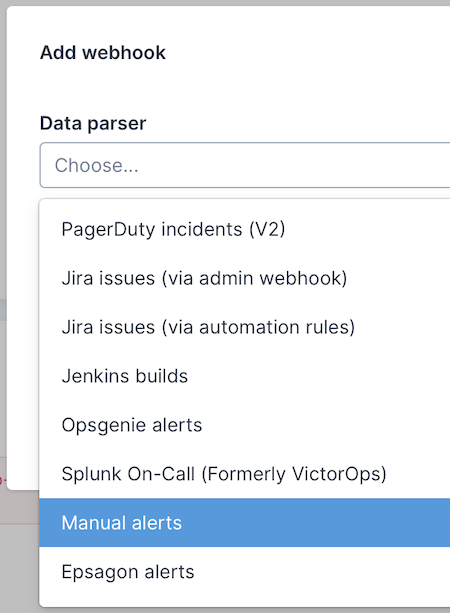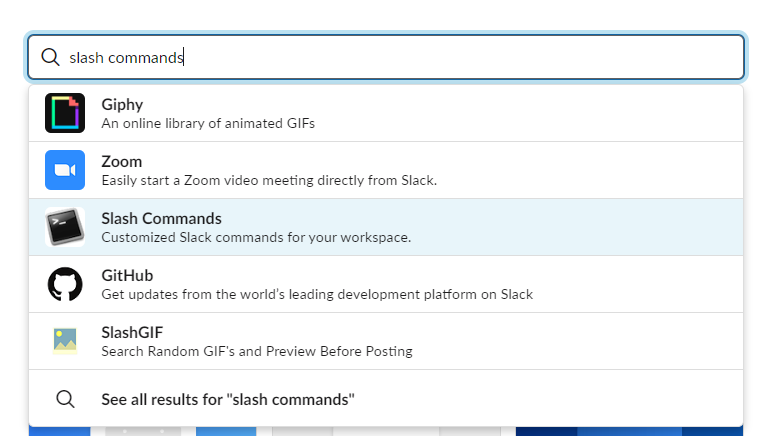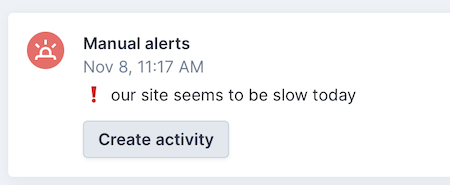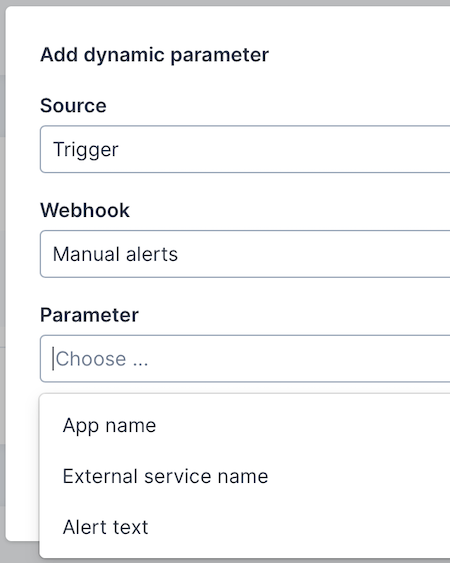Receiving Manual Alerts
Here's how to set up a manual alert webhook.
Once configured, you can:
- route manual alerts Transposit and Slack
- create activities and run runbooks tied to manual alerts
- trigger runbooks to run when manual alerts are received
- trigger runbooks to run when an activity is created in response to manual alerts
- invoke actions to remediate the underlying issues triggered by manual alerts
- set dynamic parameters using payloads provided by manual alerts
Follow the steps below to integrate manual alerts with Transposit.
1. Create Manual Alert Webhooks in Transposit#
Go to Settings > Webhooks, and click Add webhook. Choose Manual alerts, as shown below.

Note: The optional Slack channel must already exist, create it before adding the webhook.
Click Add and then find the webhook you just added in the list. Click Click to copy to copy the URL to the clipboard or manually copy the endpoint URL.
2. Set Up Slack Slash Commands#
Go to your Slack's app page, search for "Slash Commands", and select the app.

Click the Add to Slack button to create a new slash command, enter a name for your slash command, and click the Add Slash Command Integration button.

In the Integrations Settings section, set the URL field to the Endpoint URL you copied from Transposit, and click Save.

The Slack slash command is now setup to call this webhook.
3. Trigger Manual Alerts in Slack#
Slack is now setup to call this webhook for new incidents. You can test the webhook by using the slash command, as shown below.
Note: The text provided as an argument to the slash command will be the title of the alert.

4. Integrate Manual Alert Webhooks in Transposit#
With Slack slash commands set up to work with webhooks, you can do the following in Transposit.
4.1 Receive Alerts#
The message is displayed in Slack as follows, with the Create activity button so that you can create new activities from the alert.

In Transposit, the message is displayed as below, with the Create activity button so that you can create new activities from the alert.

4.2 Create Activities#
When an alert is received in Transposit or Slack via the manual webhook, click the Create activity button to create a new activity, add runbooks, and follow the progress of work done by your team in response to the manual alerts.
4.3 Add Dynamic Parameters#
If you have defined dynamic manual alert parameters while adding runbook actions, as shown below, their values will be populated by the manual alert's payload when the actions are executed during runbook runs.
